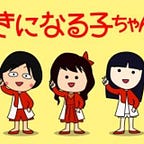Supermodel: Inside the Bizarre Teenage Mind of Tomoe Shinohara
Exploring the music of the ’90s teen star’s bonkers debut album assisted by Ishino Takkyu of acid-house duo Denki Groove
Seventeen-year-old Tomoe Shinohara appeared on variety shows in the mid-1990s like she was a character from a pop-culture fever dream. She showed off an eccentric taste in fashion with her now-iconic look of a kindergartner in pigtail buns, whose outfits resembled a wild collision of primary colors and an entire rack of dollar-store accessories. Her scatterbrained personality on air matched the loudness of her appearance, driven by the very enthusiasm of a sugar-high child who fulfilled her lifelong dream to be a star on TV.
From listening to Shinohara’s debut album, Supermodel, it’d be easy to conclude that the teen got her start in entertainment through TV. Television as a medium shapes the overall structure of the project with the album unfolding as a special audio program designed to introduce her to a broader audience. Slotted literally in the middle, the titular interlude serves as an intermission with the teen star checking in to see if the listeners are still having a good time. She then cues the start of the second half of the record like the start of act two of a cartoon episode.
As much as TV inspires both the background and sequencing of Supermodel, however, music was what first got Shinohara on the variety shows that made her famous. After auditioning for Sony as a singer, the teen began working with Ishino Takkyu of the acid-house duo Denki Groove on her own accord. She debuted in 1995 with their collaborative single “Chime” — a wonky rave-pop track that’s bizarrely curated as the singer’s outfits — and Ishino ended up producing a majority of Supermodel.
The sound of Shinohara’s debut full-length is unmistakably the product of this odd partnership with it surveying a wide array of alternative electronic music of the time. The album kicks off with an obnoxious pop single, “Kuru Kuru Miracle,” driven by the feverish energy of acid house and drum ’n’ bass —foundational dance genres for the music of Denki Groove. But Ishino also calls up other producers in his circle to feature styles outside of his wheelhouse. “Chatterlay Fujin Ni Akogarete” channel the more psychedelic side of trip-hop with Shinohara toning her voice down to a murmur while the lounge-pop of “I Love You, De Ja Vu” slip into a hallucinatory terrain.
Supermodel impresses enough with Ishino compiling odds and ends for the album, retroactively offering a snapshot of what existed at the fringes of mainstream Japanese electronic music during the mid-1990s. The novelty of the production, though, takes little stock in a record designed to highlight Shinohara, an obnoxious yet endearing personality who proves here to be incredibly difficult to forget, if not ignore. She’s the vehicle to introduce out-there ideas by the featured producers to a wide audience, not the other way around.
Shinohara had already caught the curiosity of daily TV viewers by the time of Supermodel’s release, and so her signature quirks had now solidified into identifiable tropes in the debut album’s supposed introduction, “Kuru Kuru Miracle.” Her voice cracks into a high-pitched wince from her uncontrollable enthusiasm. She relishes in nonsensical and onomatopoeic hooks, mainly in the titular chorus. Most importantly, the song is heavily driven by self-reference to the singer’s on-screen personality, essentially functioning as an extension of a live TV performance.
Supermodel plays best when the electronic production strives to bring out the most from Shinohara’s wacky tendencies. The squiggly bass line of acid-house-tinged “Yaruki Sensation” complements the star’s loopy show of character displayed through the song’s nonsensical chorus, which puts a lot more emphasis on sound over meaning in the lyrics. The dub-influenced first third of “Rainbow Rara Roo” distorts her already-silly voice like a fun-house mirror while the abrupt switch in style from dub to surf rock seems like a rather natural choice considering her mercurial instinct.
J-pop audiences in the ’90s had already been introduced to some rendition of Eurodance but not as left-field as the music brought by Ishino and his crew. Through her idiosyncratic personality, Shinohara helps makes sense of the electronic sounds and experimental ideas that existed a little outside of the pop system in Supermodel. The intensity of drum ’n’ bass, the alien feel of dub techno, the silliness of acid all naturally felt part of Tomoe Shinohara’s bizarre world. The one-of-a-kind teen personality then beamed these odd-shaped sounds into the lives of TV viewers everywhere.
